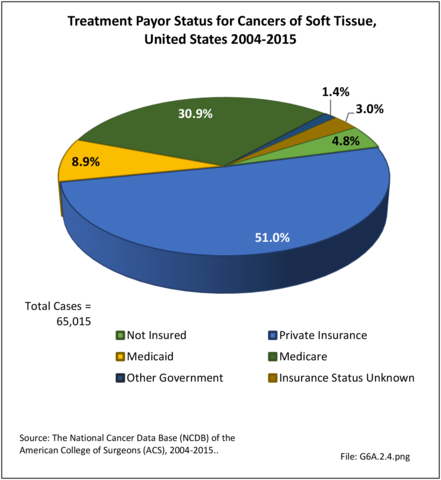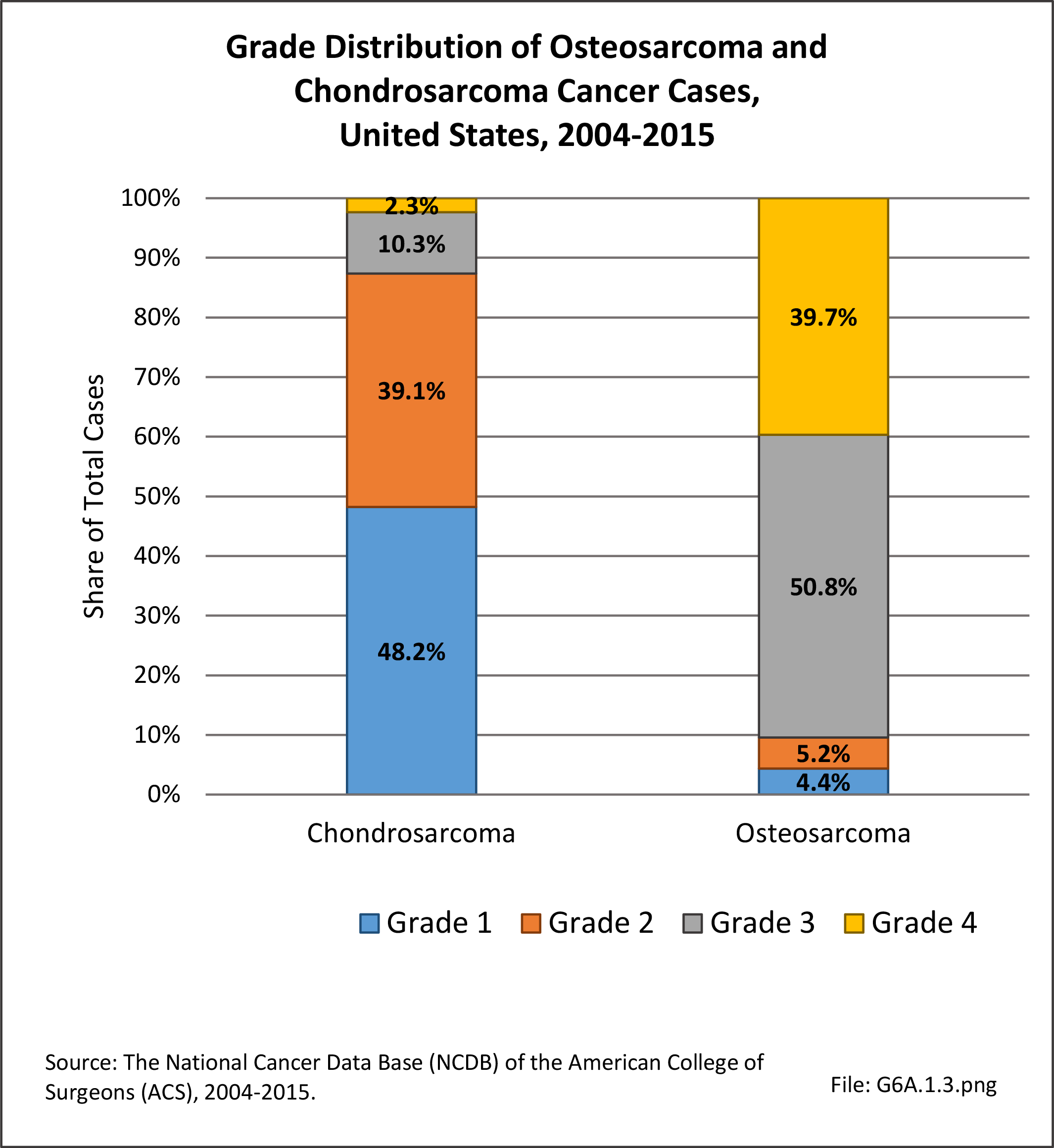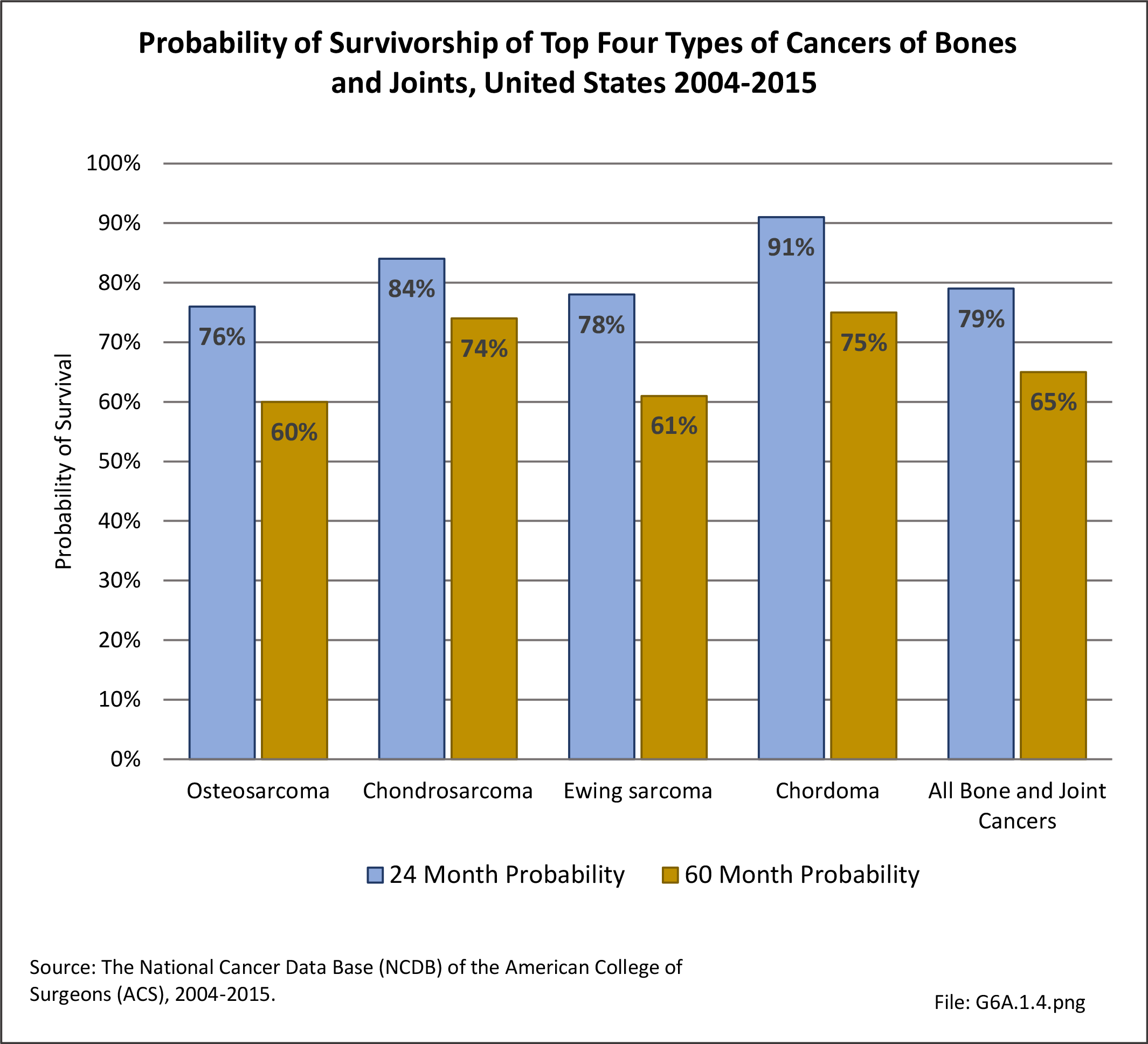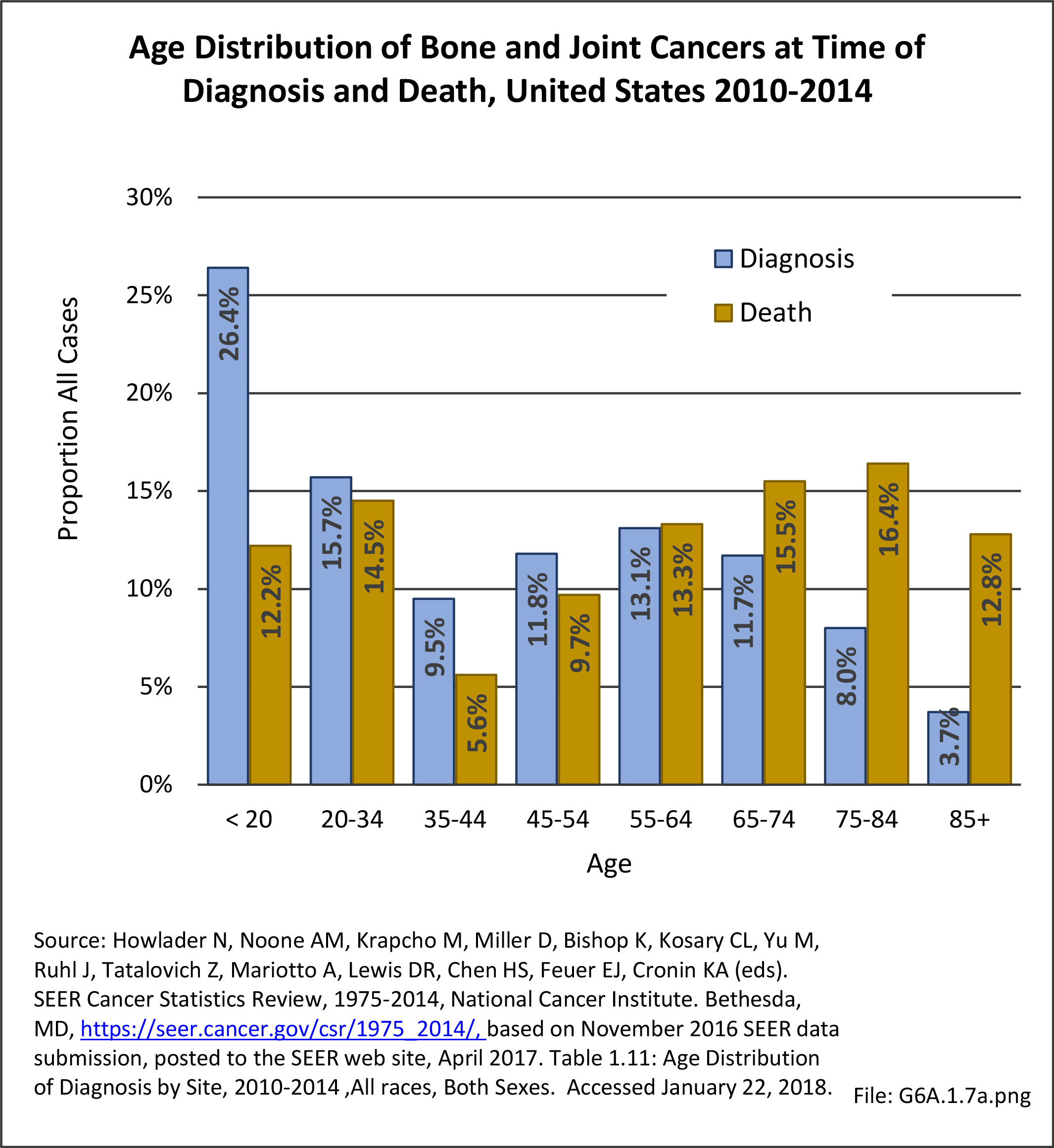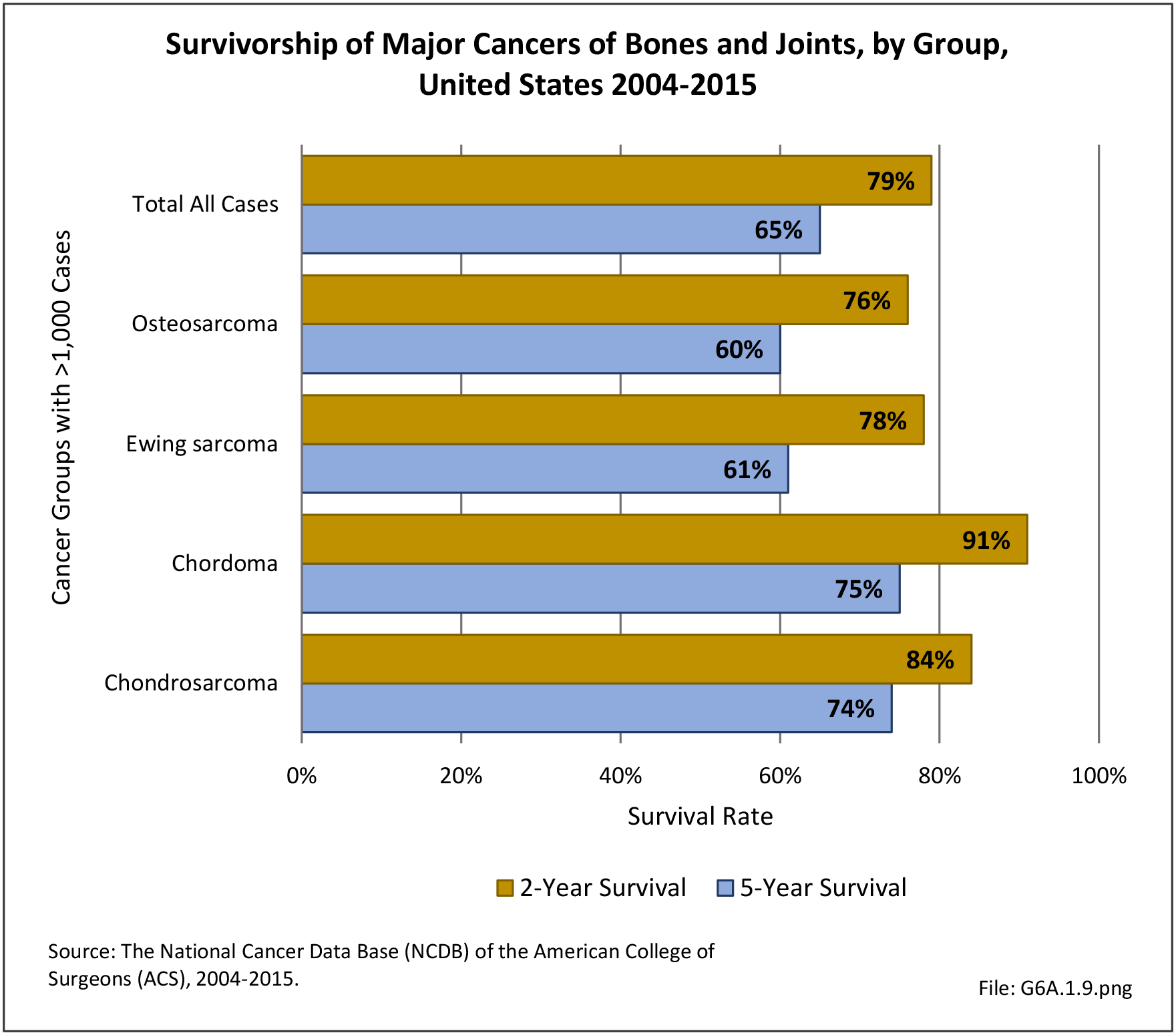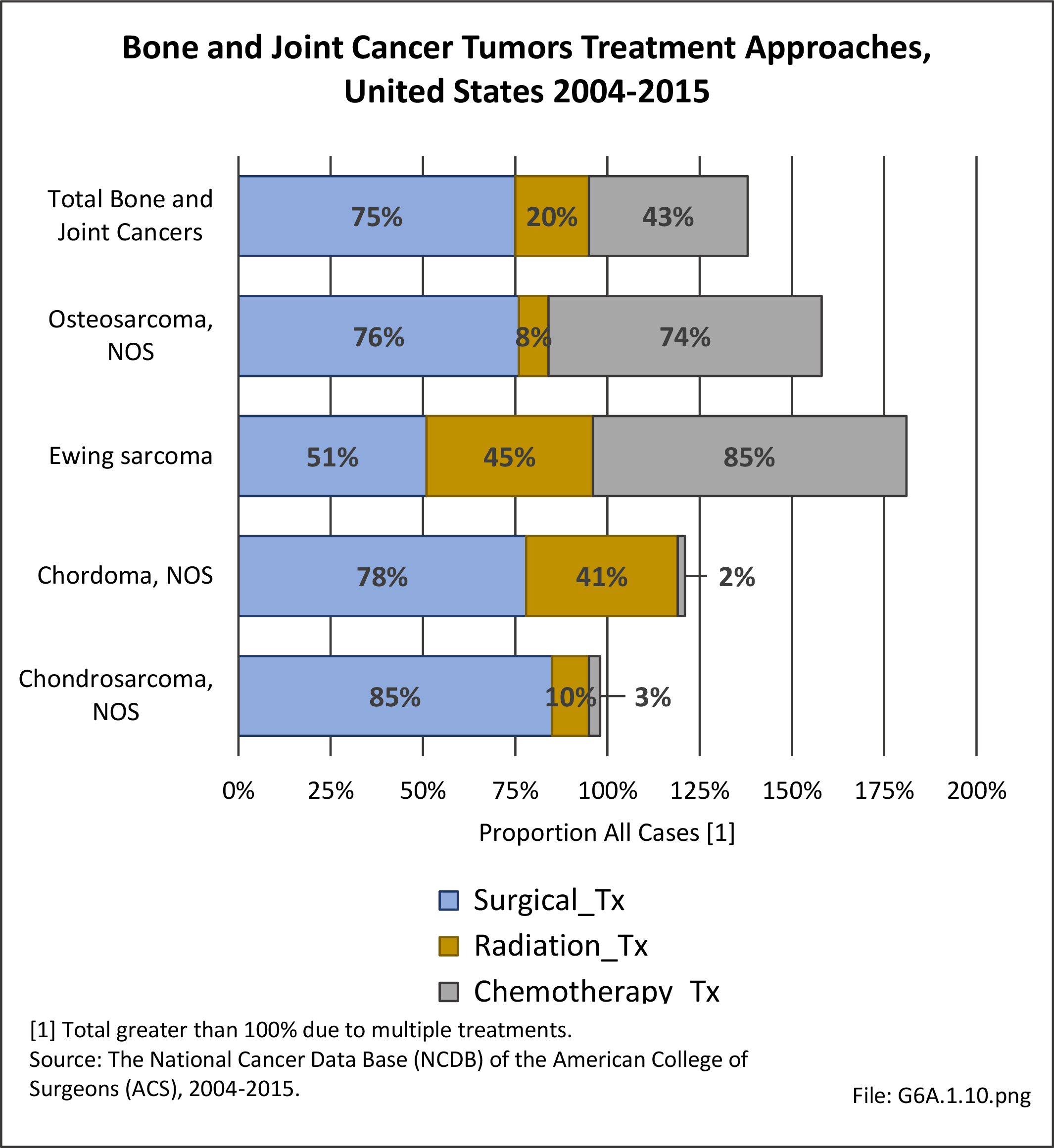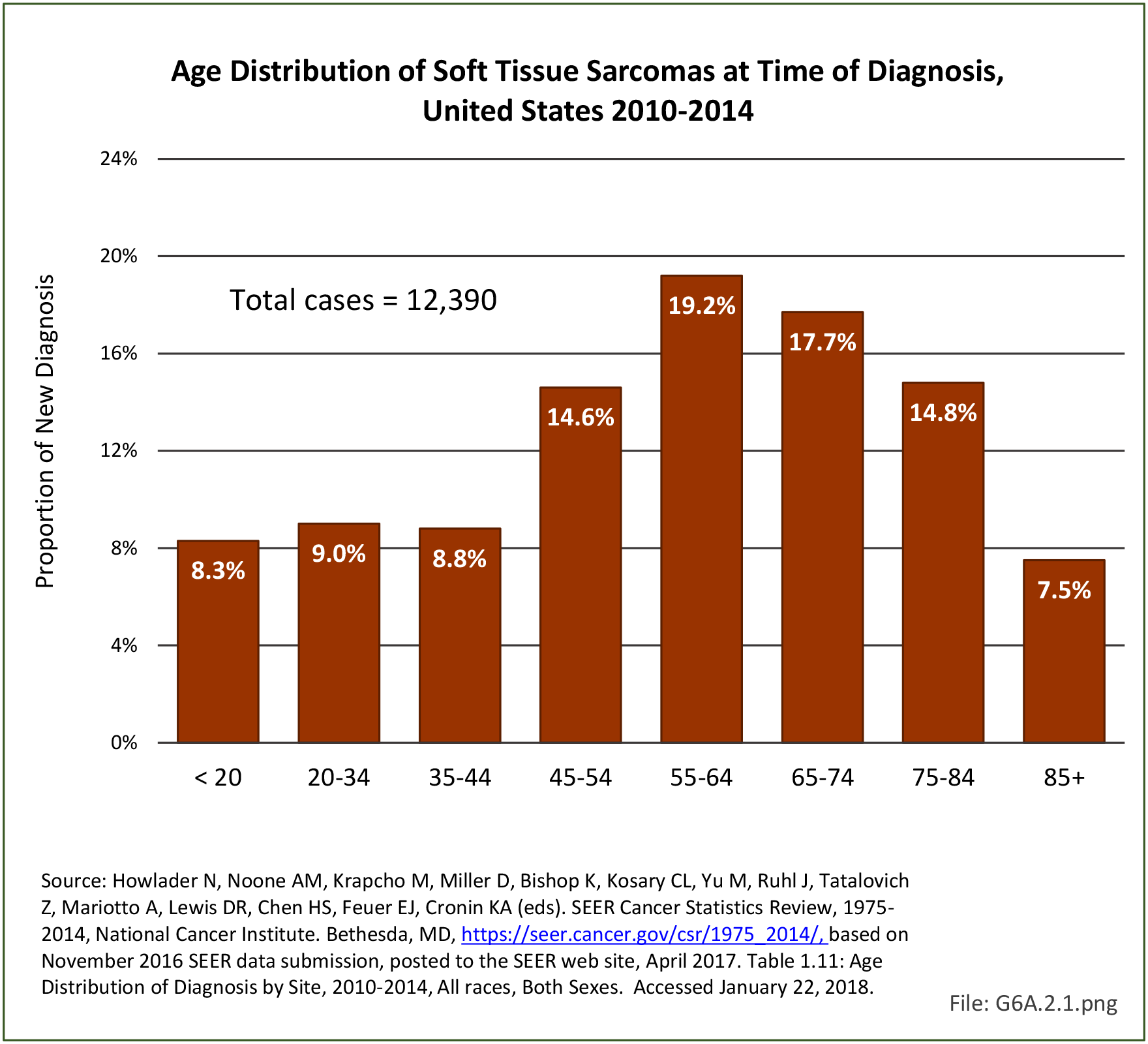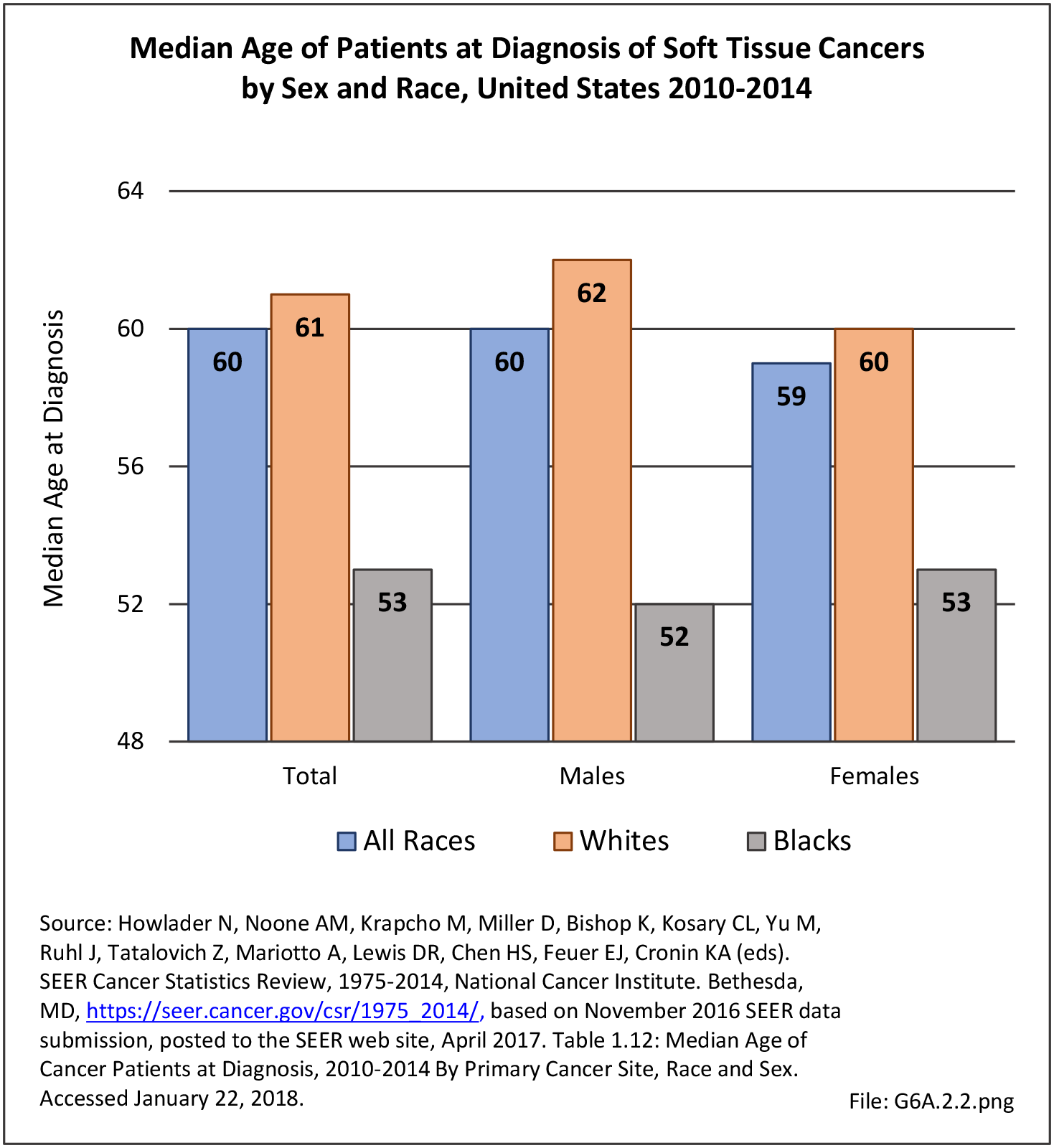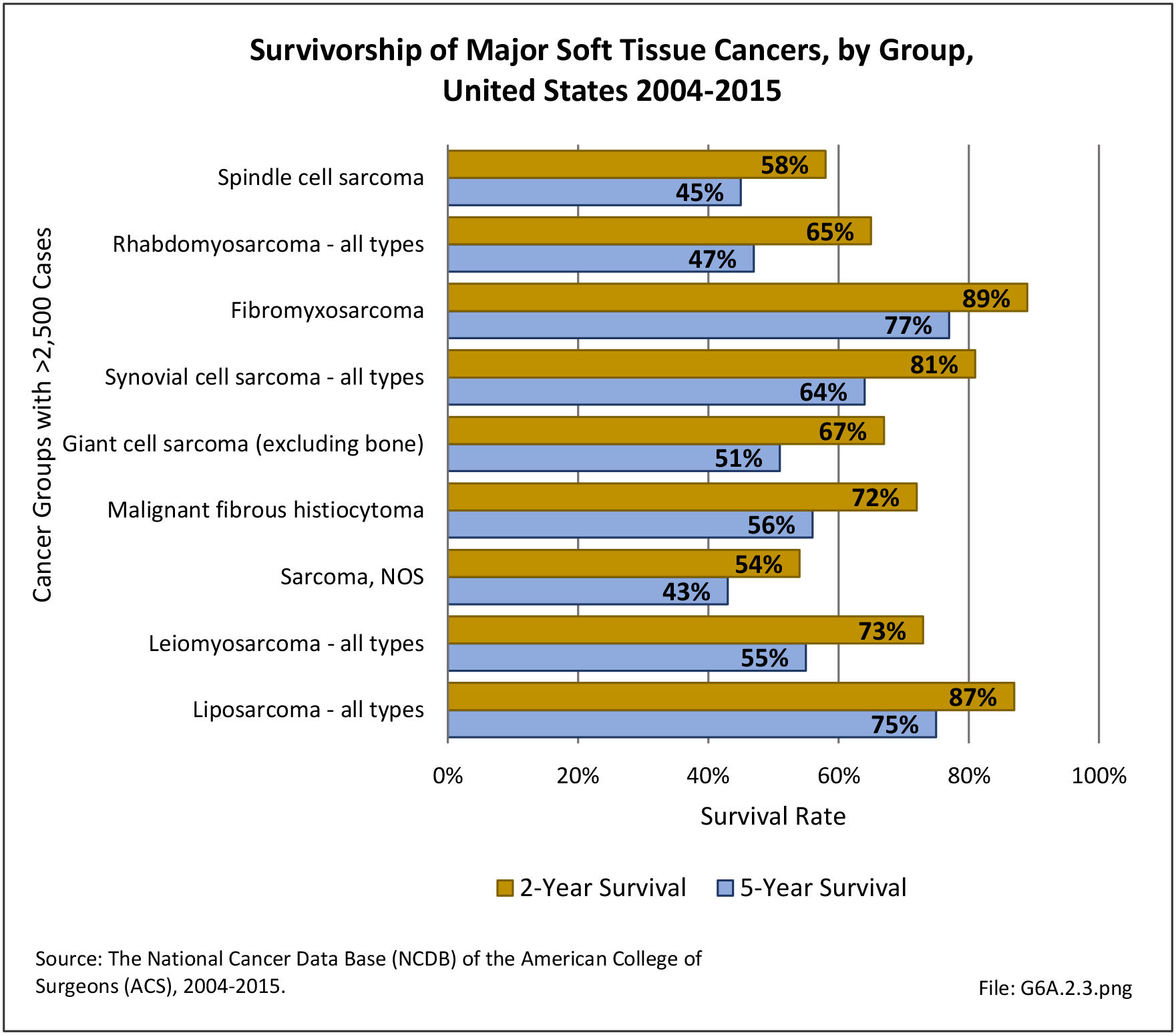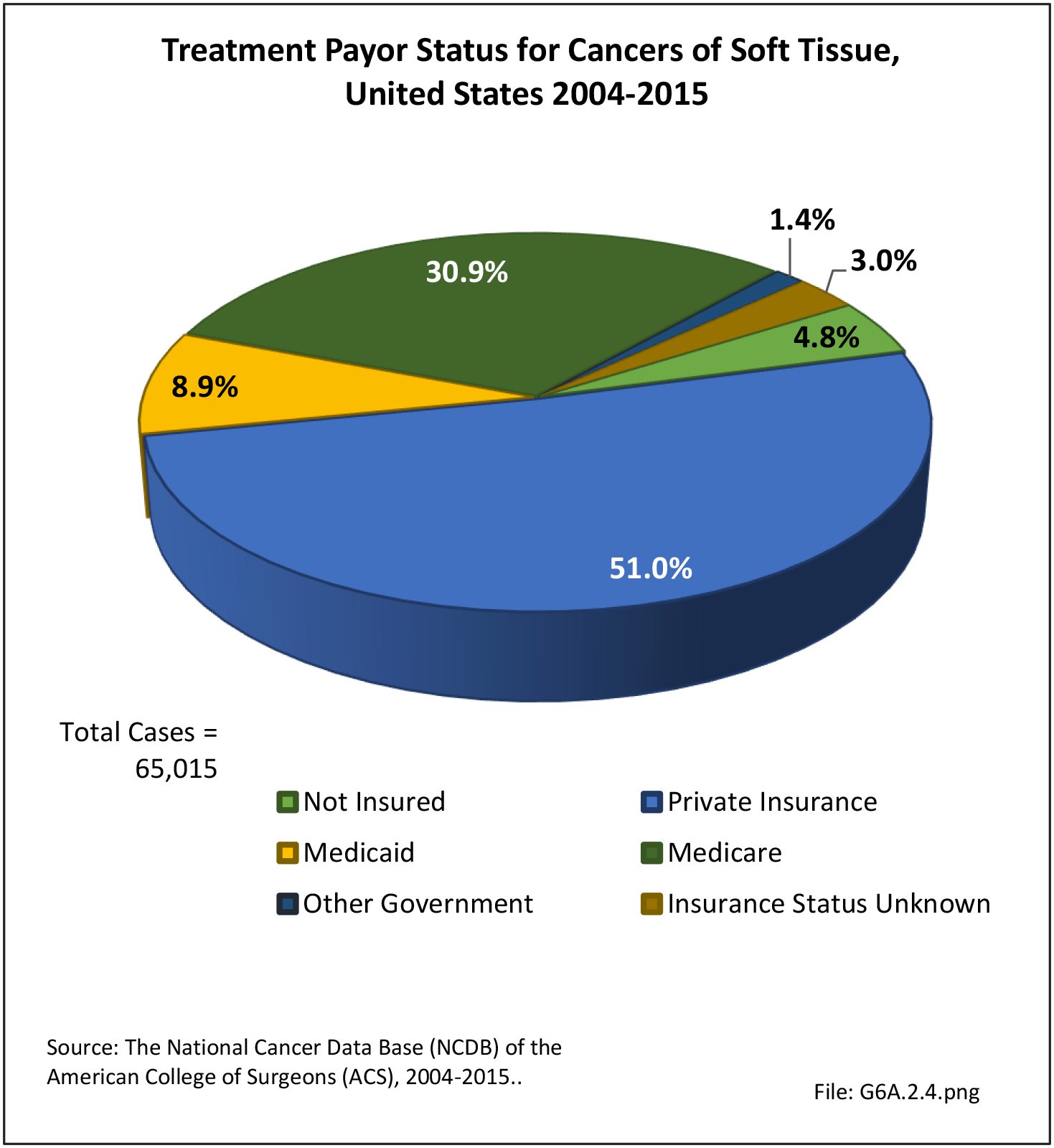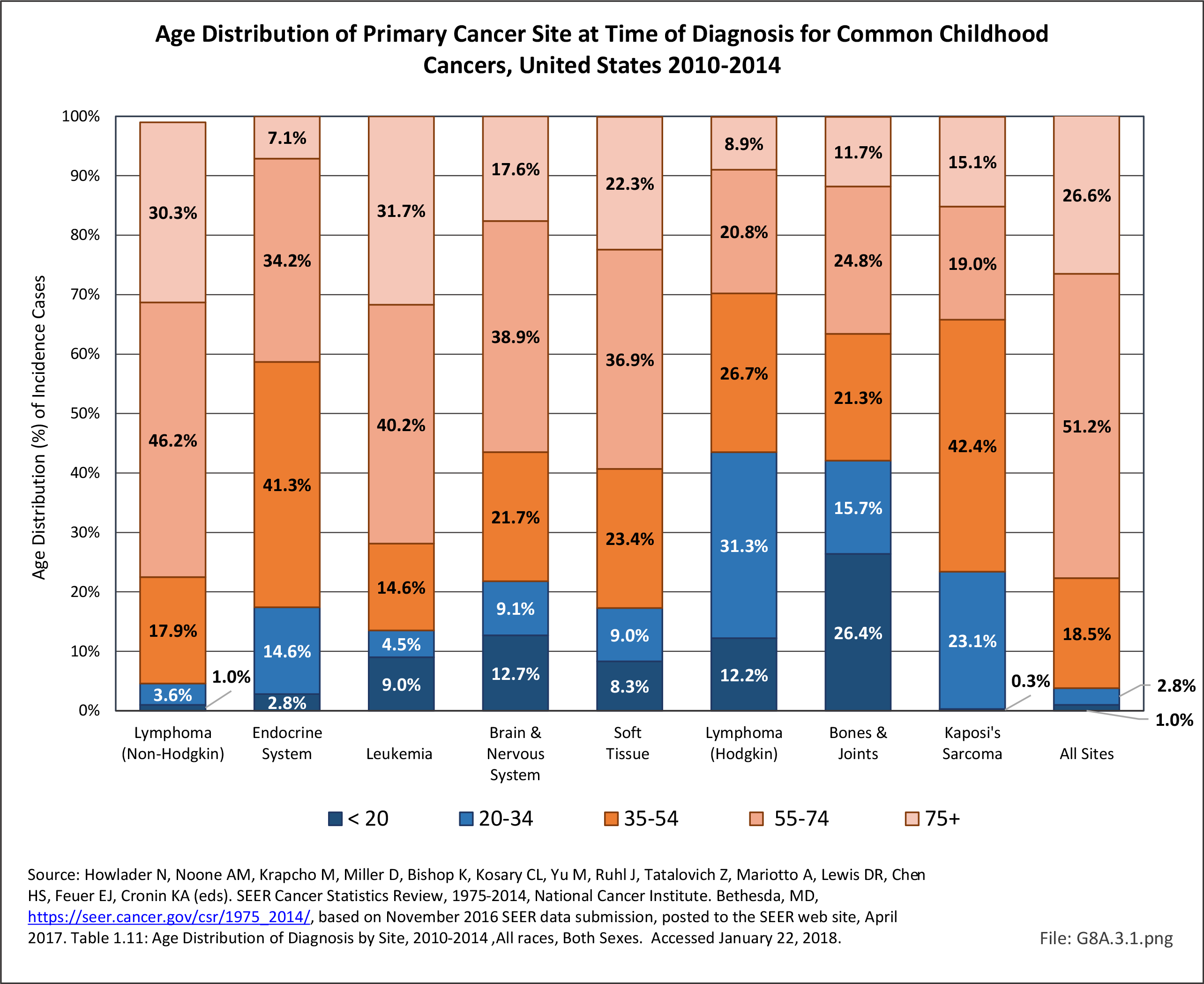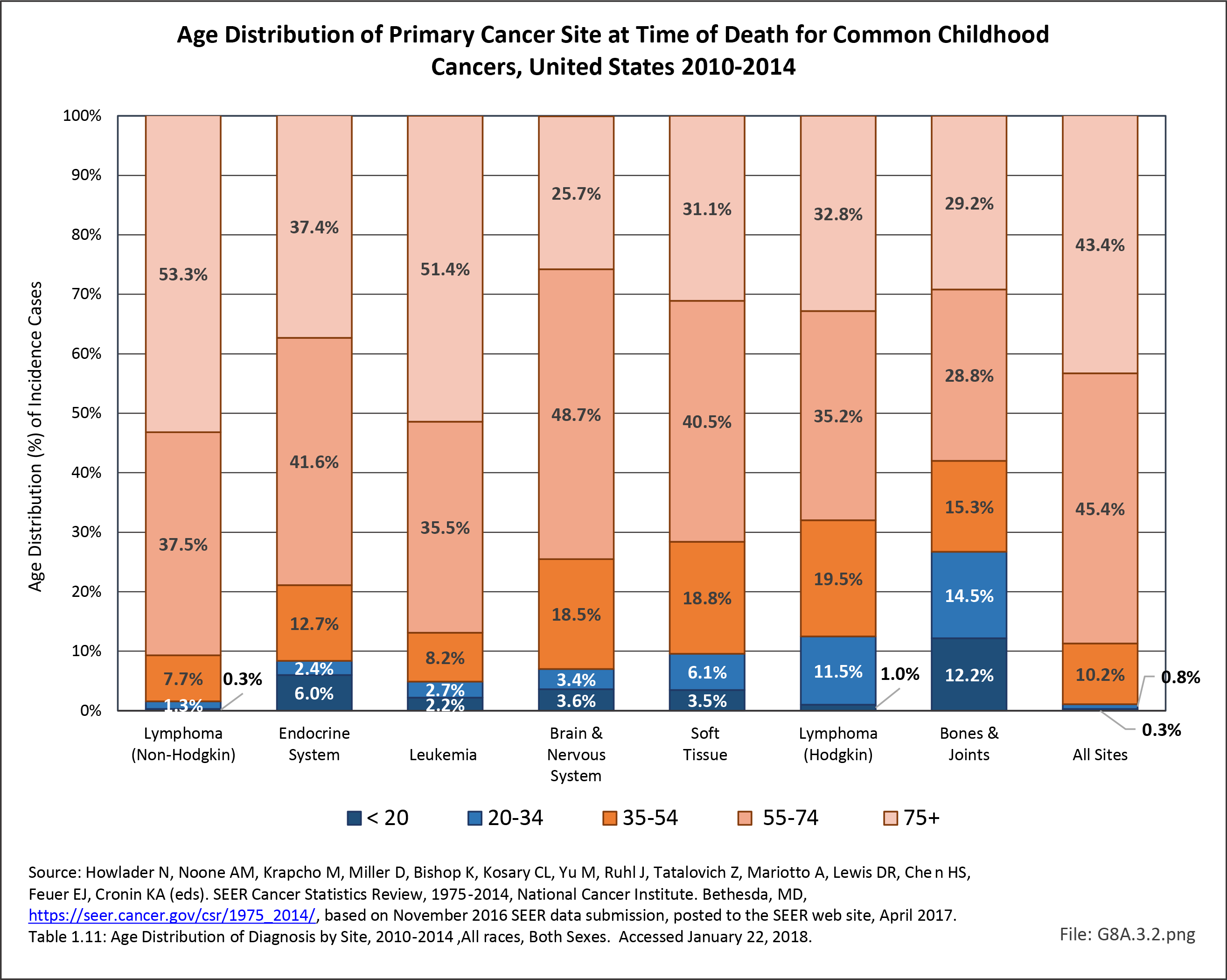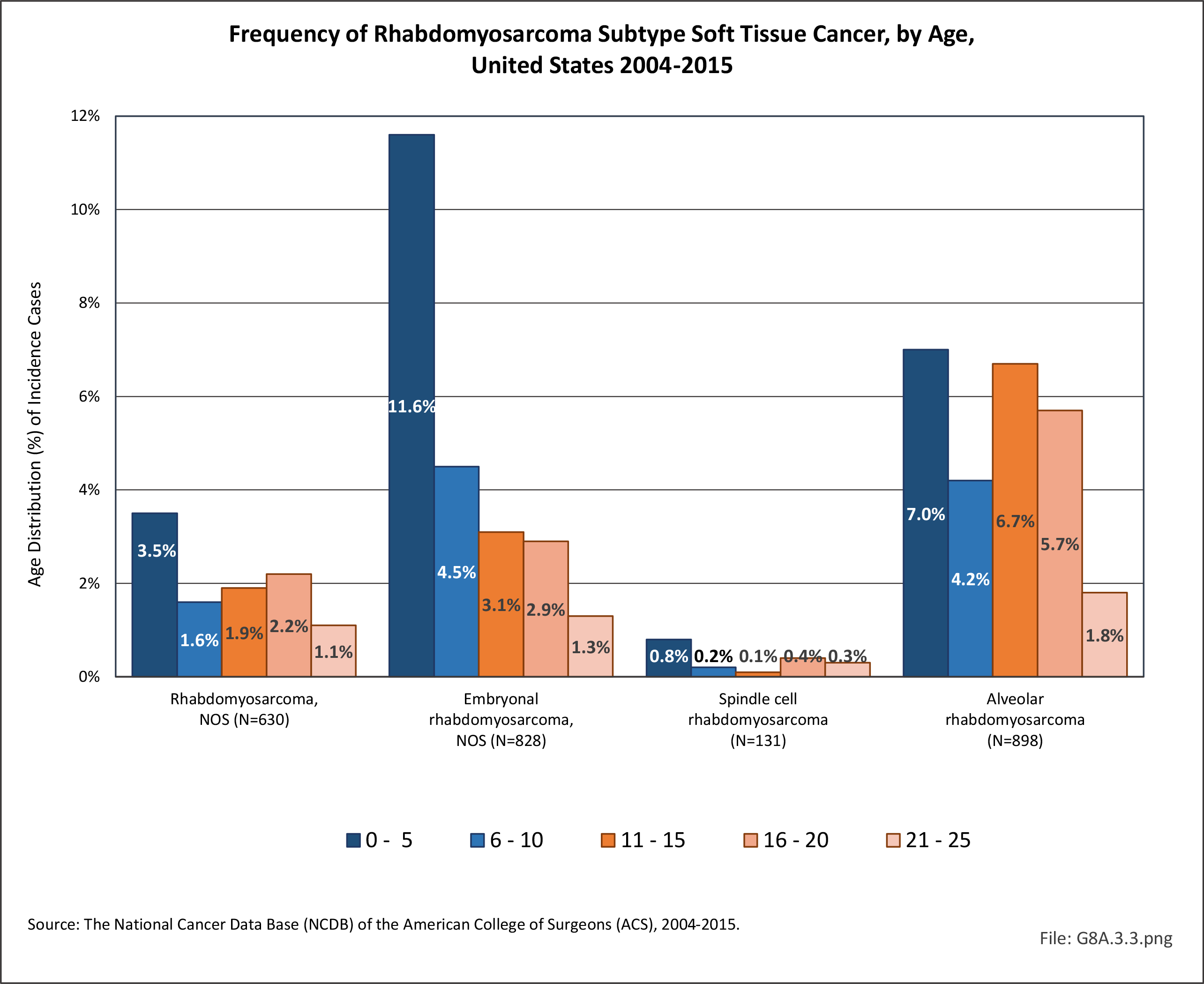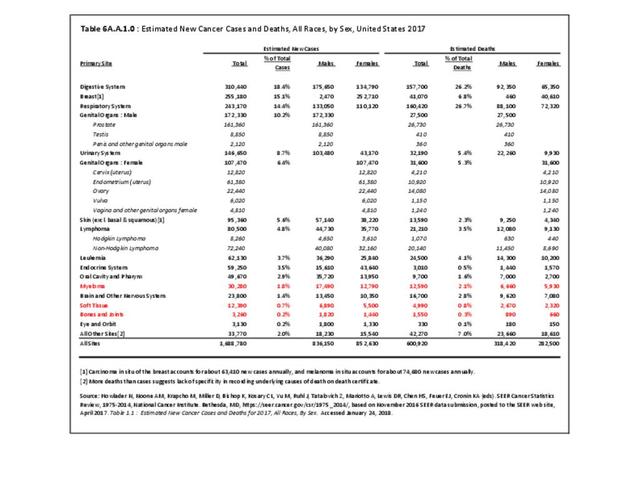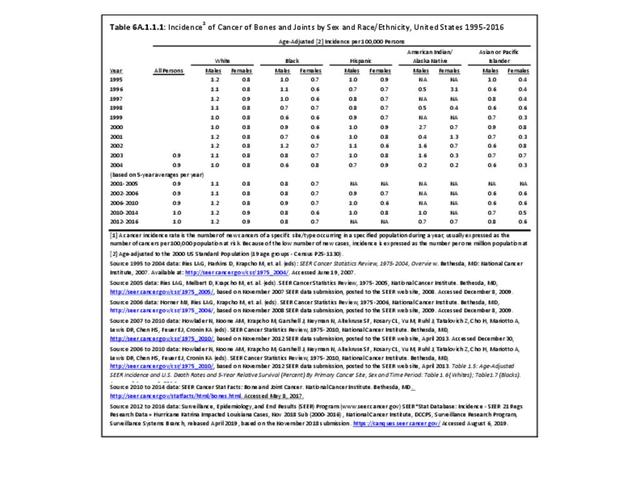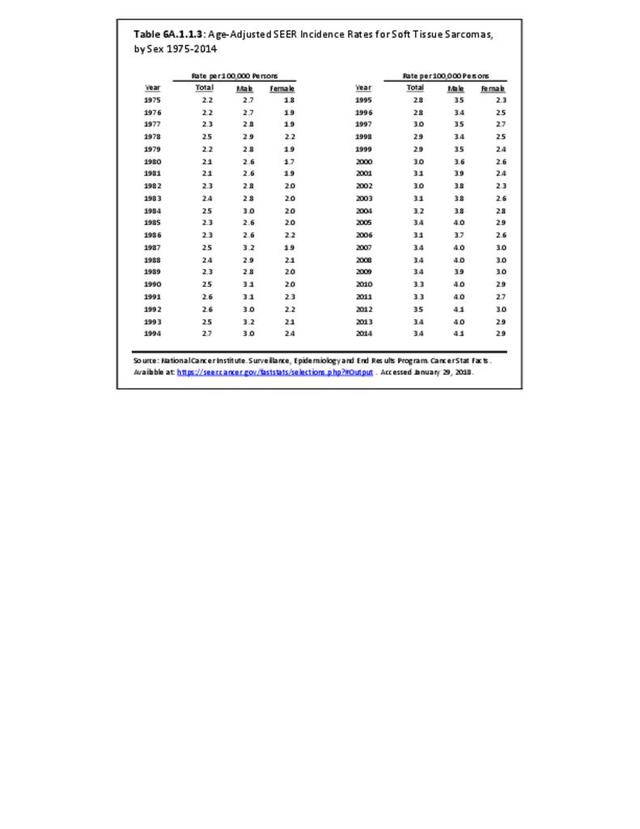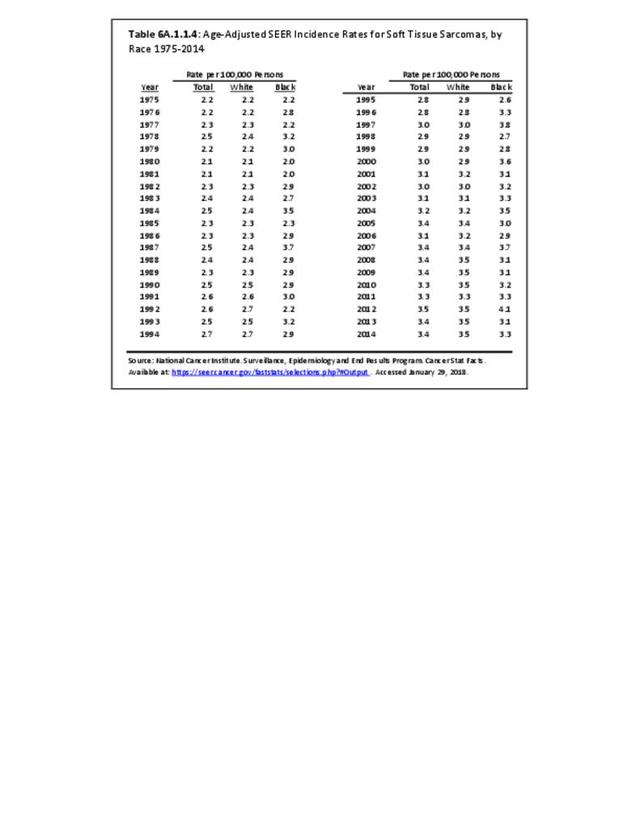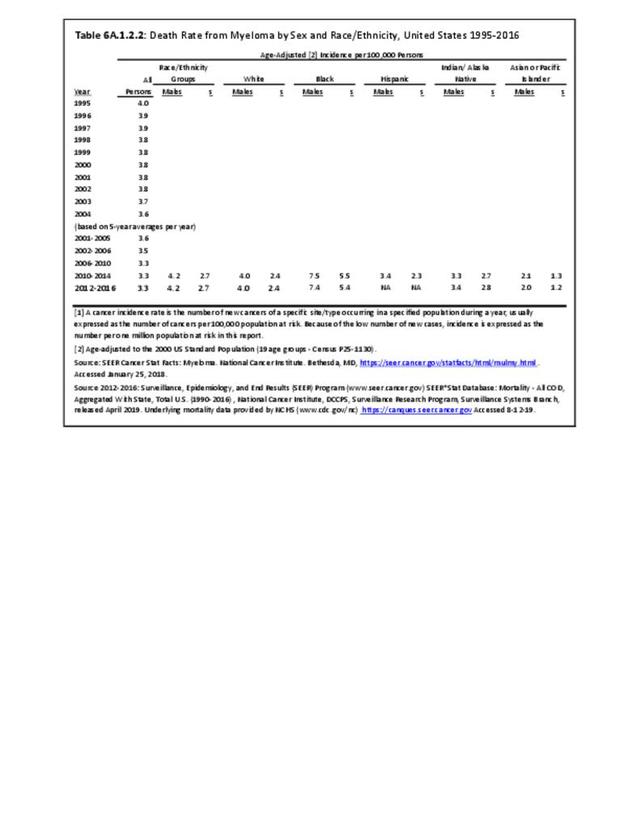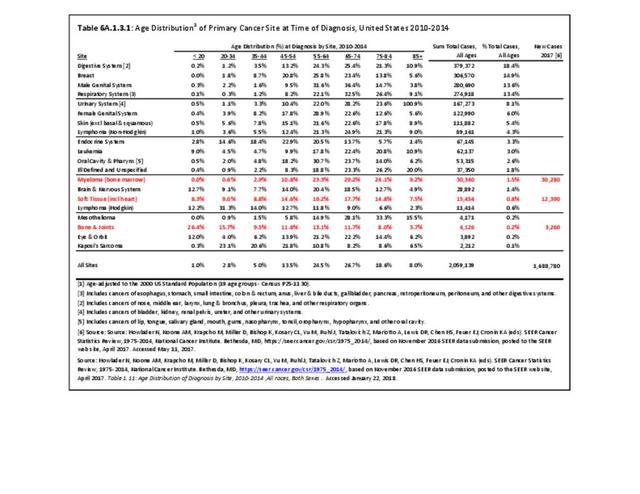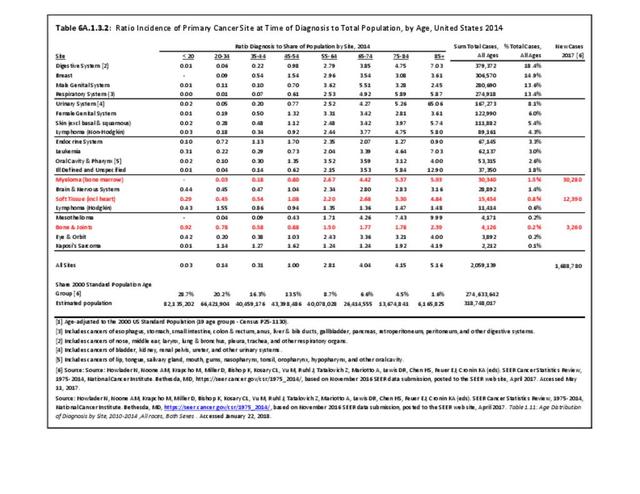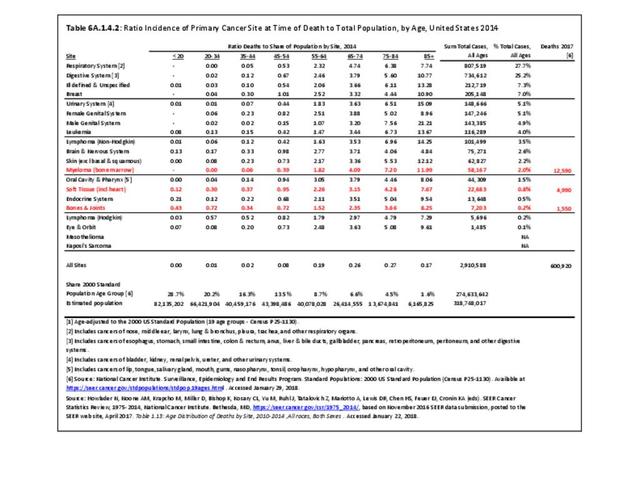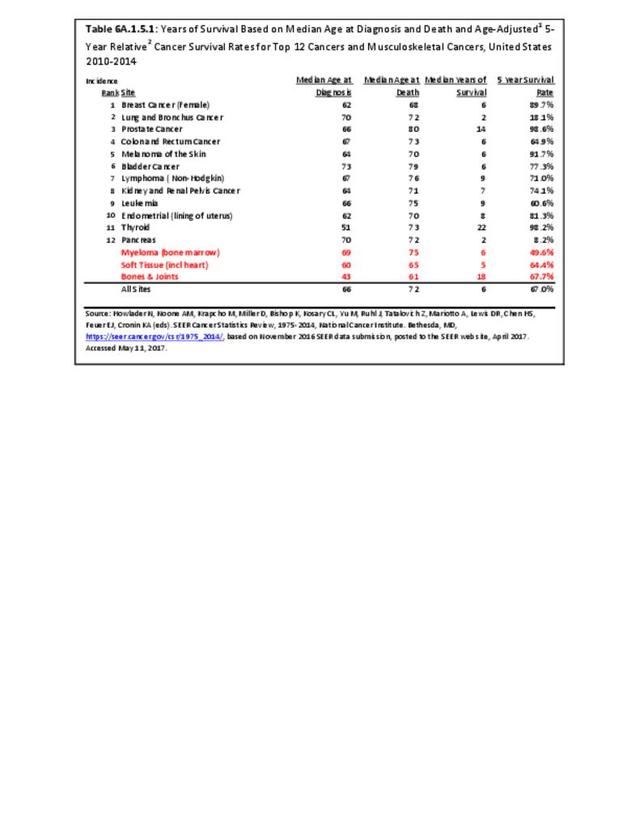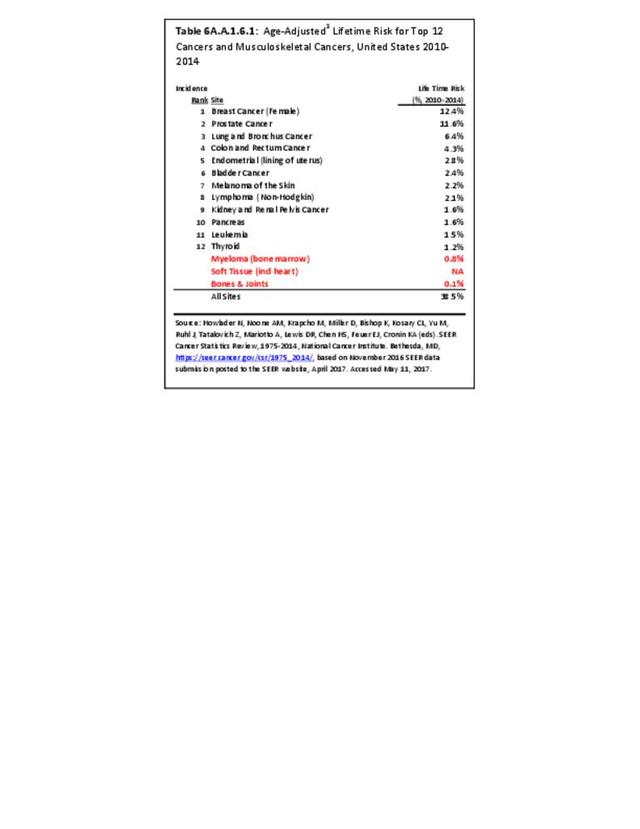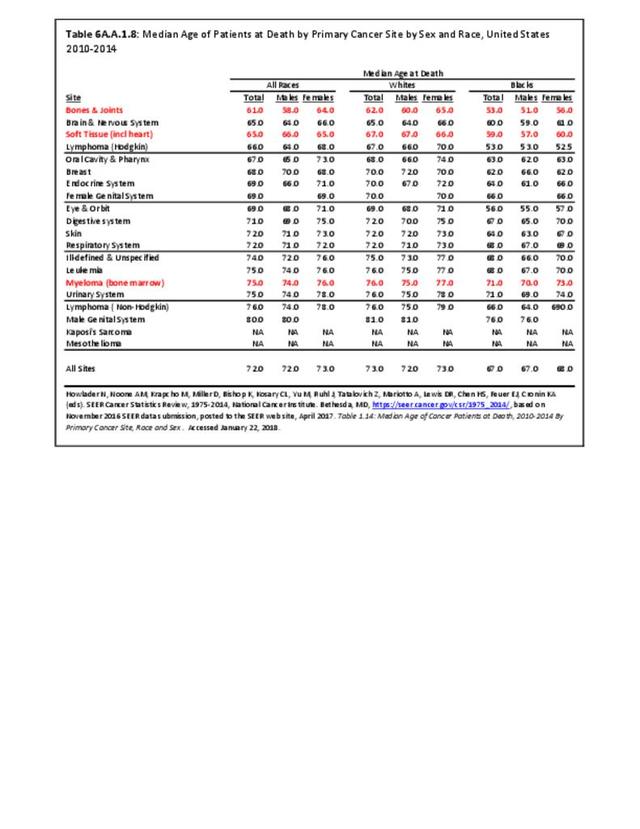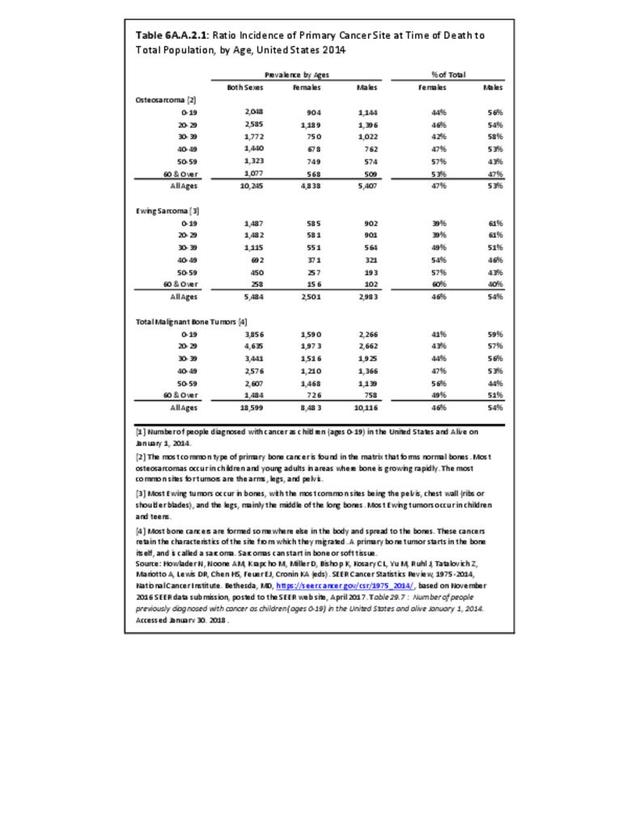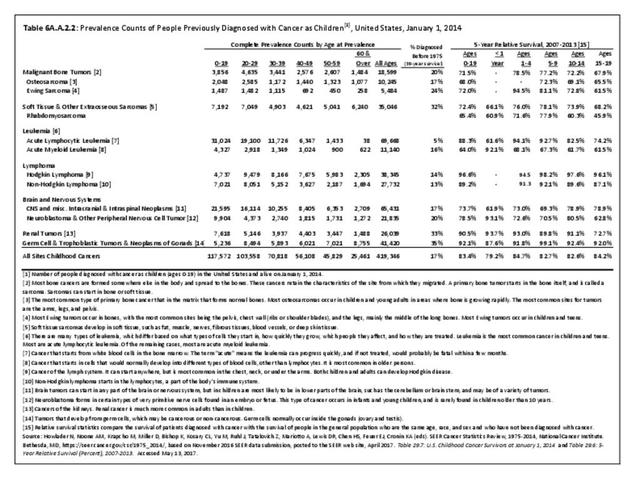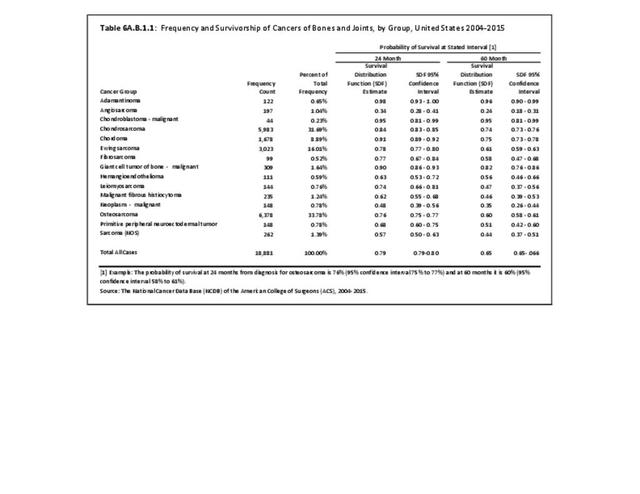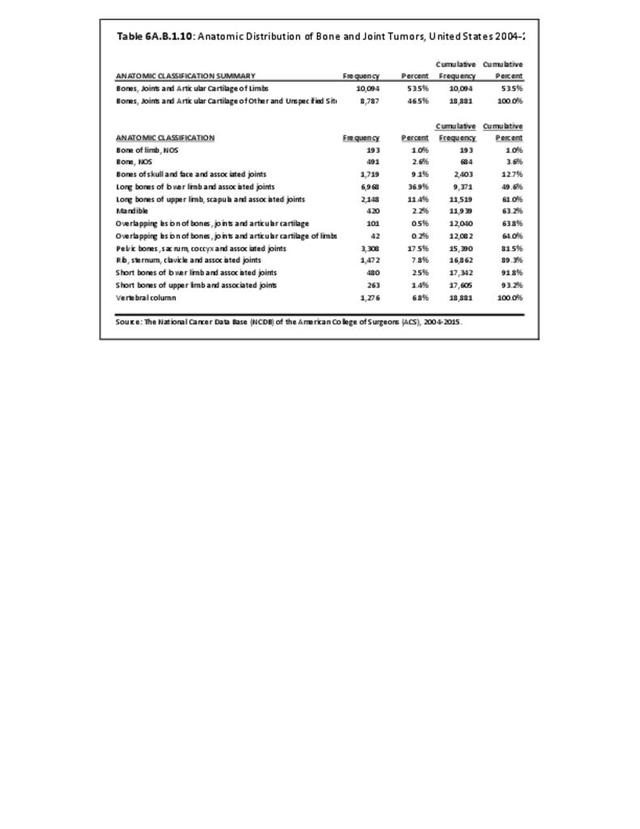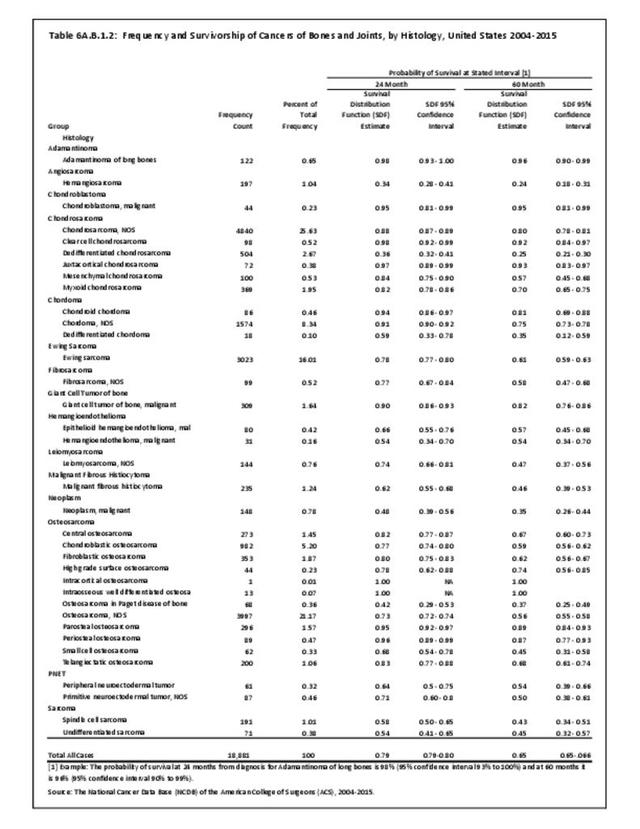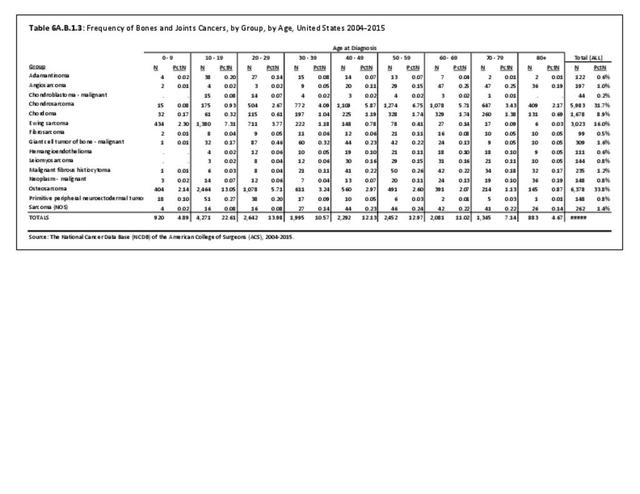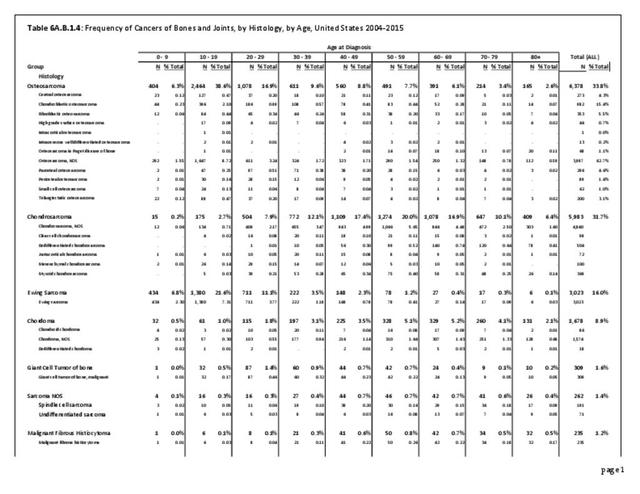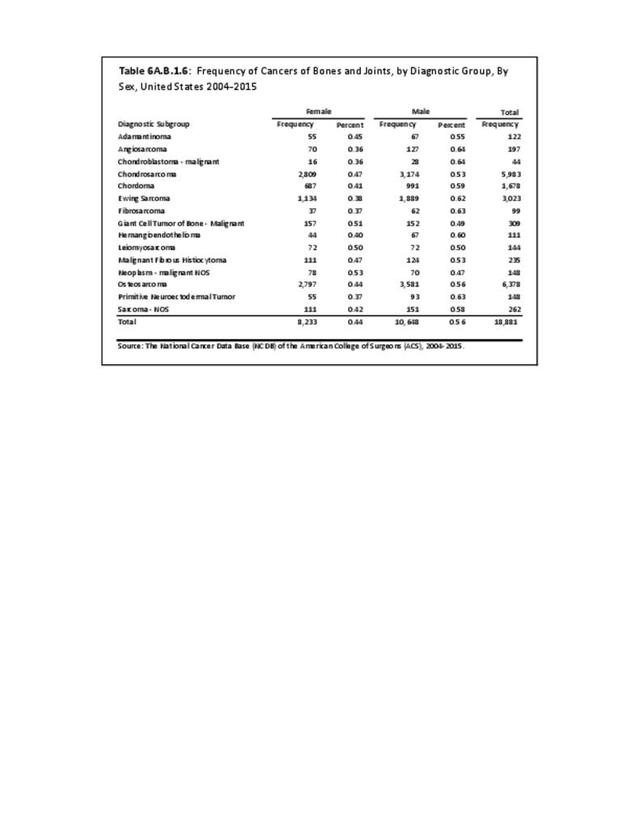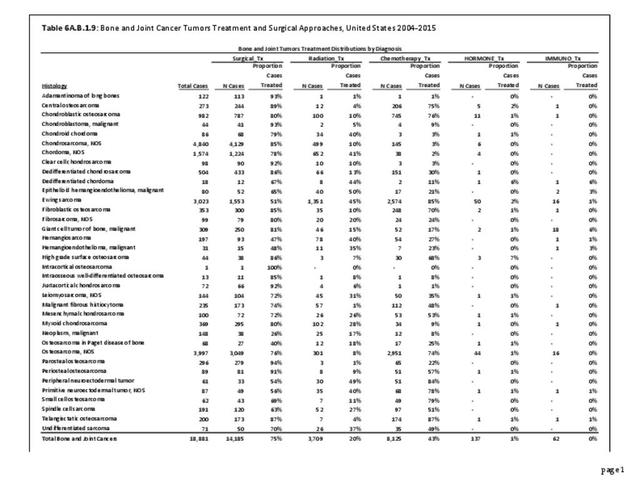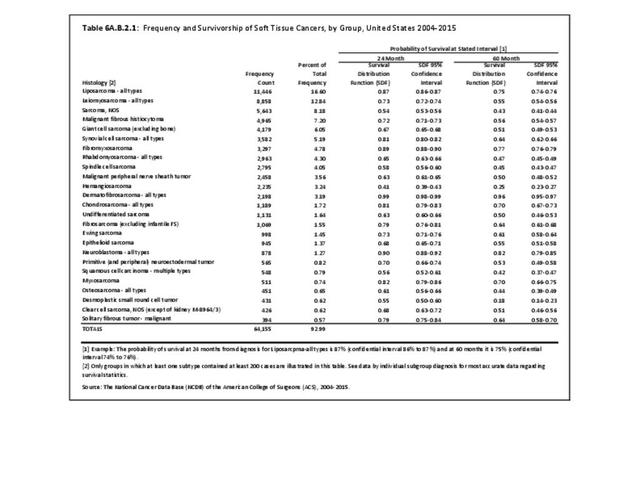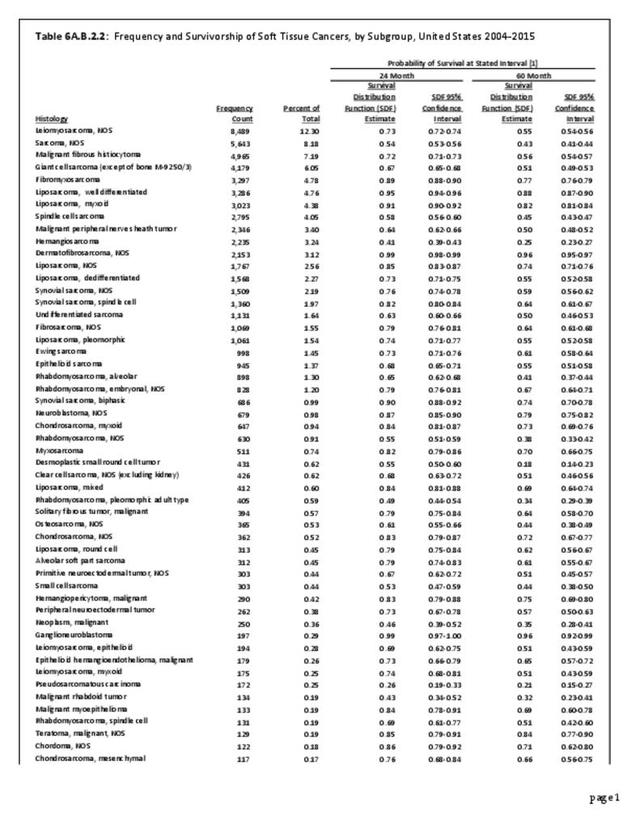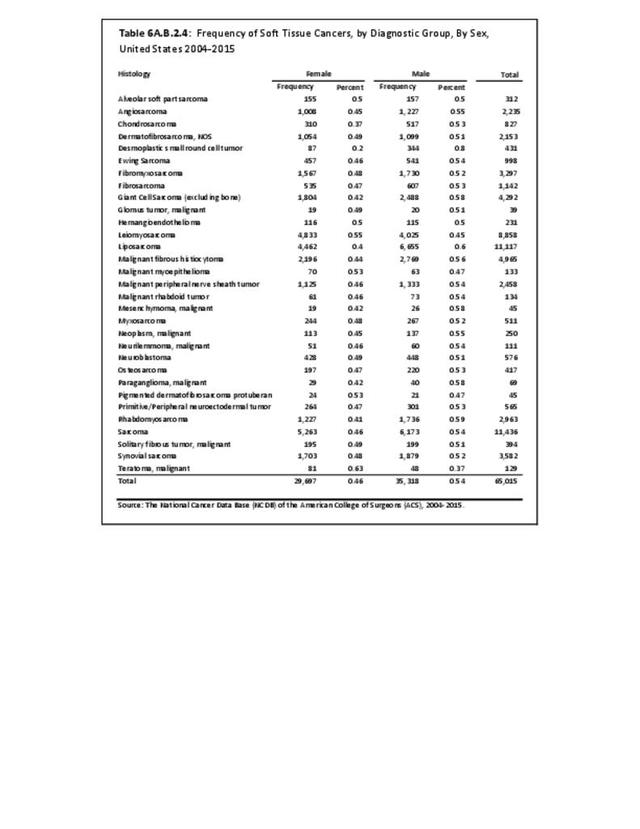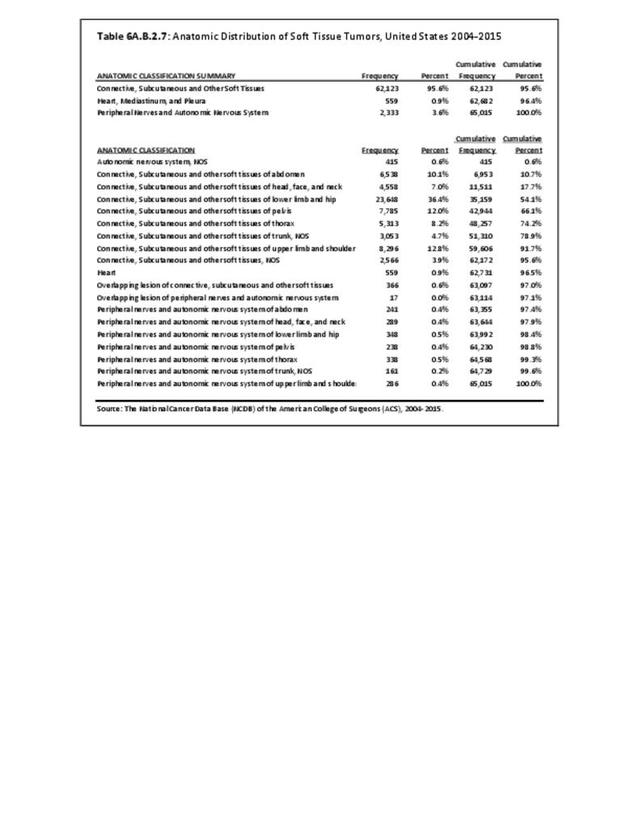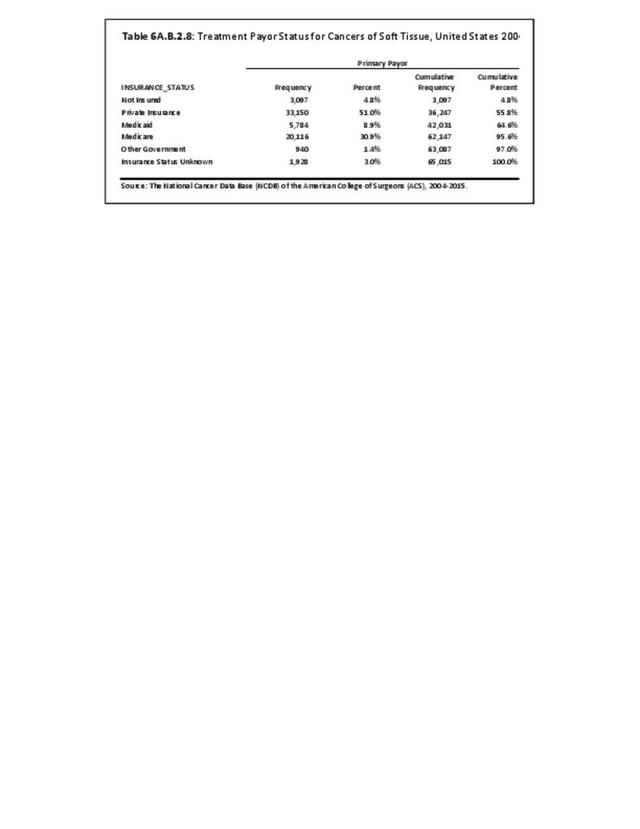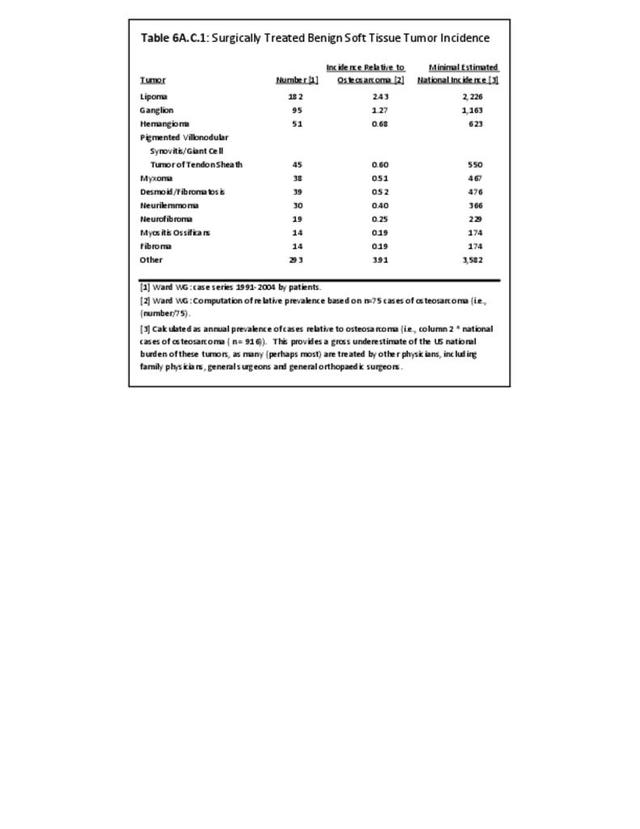From 2004-2015 inclusive, information on insurance coverage was available for roughly 65,015 patients treated with soft tissue sarcomas. The largest insurance payer was private insurance (51.0%), followed by Medicare and Medicaid (30.9% and 8.9%) respectively. Other government payors covered 1.4%, while 4.8% were uninsured and payor status was unknown in 3.0%. (Reference Table 6A.B.2.8 PDF CSV)
The total economic costs of malignant soft tissue sarcoma are unknown. Surgery is often the first line of treatment for soft tissue sarcoma. Multiple therapies may be needed during the course of the patient's disease, especially in more advanced cases. In later stages of the disease in those not cured with surgery alone, significant costs will accumulate as patients typically develop pulmonary disease and ultimately die. Chemotherapy, and subsequently hormone therapy, immunotherapy, bone marrow transplant, and endocrine treatments are undertaken in a small number of cases that fail standard treatments. Overall, costs will vary with treatments utilized, number, and intensity of treatments, and can easily top $100,000 for a single patient that receives surgery, chemotherapy, and radiation therapy. (Reference Table 6A.B.2.6 PDF CSV)
Throughout the years 2005--2008, one study reported that the average professional charge for a primary excision was $9,700 and $12,900 for re-excision. Although every 1-cm increase in size of the tumor results in an increase of $148 for a primary excision, size was not an independent factor affecting re-excision rates. The grade of the tumor was positively associated with professional charge, such that higher-grade tumors resulted in higher charges compared to lower-grade tumors. Analysis including professional, technical, and indirect charges revealed that, on average, patients undergoing definitive primary excision at their cancer treatment center were charged $40,230. This compared to $44,770 for patients receiving definitive re-excision of unsuccessful or incomplete previous resections at the same cancer treatment center. This higher cost did not include the charges and costs generated by their previous unsuccessful or incomplete previous attempt at resection.1
This analysis confirms that proper work-up, evaluation, and treatment are key to maintain costs, as well as improve the outcome for these patients. This cost analysis did not include the costs associated with chemotherapy or radiation therapy, or the costs of diagnostic and follow-up laboratory and radiographic studies, nor the actual costs of care.
- 1. Alamanda VK, Delisca GO, Mathis SL, et al. The financial burden of re-excising incompletely excised soft tissue sarcomas: a cost analysis. Ann Surg Oncol 2013; (9): 2808-2814.
Edition:
- Fourth Edition

